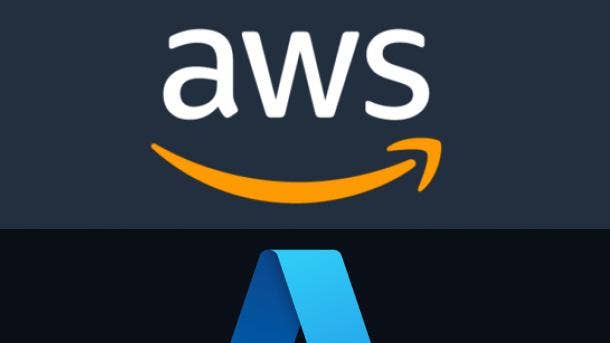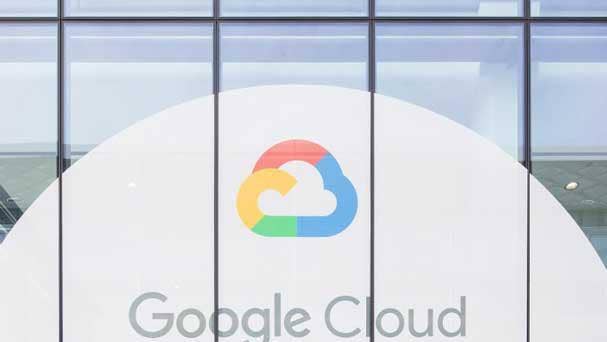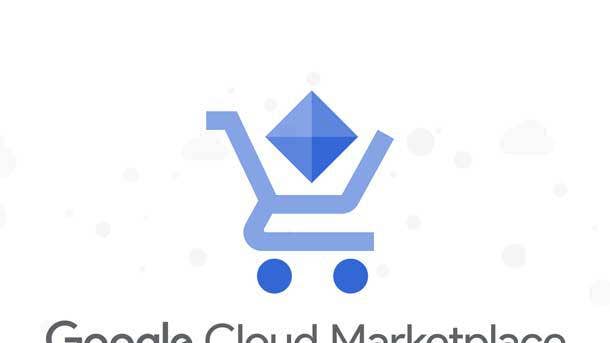Thomas Kurian: Why Google Cloud Bests AWS, Azure In The Channel
CEO Thomas Kurian talks to CRN about why channel partners should place their bets on Google Cloud versus the cloud competition along with his goal of attaching partners to 100 percent of customer engagements.

Thomas Kurian’s ‘Commitment’ To Channel Partners
Google Cloud CEO Thomas Kurian is confident that his business’ “zero channel conflict” strategy, security advantages, growing Google Cloud Marketplace and overall partner go-to-market makes it the best choice for channel partners in the cloud industry.
Kurian said much of his focus since taking over the cloud unit in early 2019 has been around increasing the synergies between channel partners and Google Cloud’s sales force, while at the same time better enabling solutions providers—which has led to more customer wins and increased sales.
“Our commitment is: build the customer base; bring that customer base to the partner ecosystem; commit to being partner-friendly with a goal to be 100 percent [channel] attach [rate]; specialized the partner ecosystem so they have deep skills in different areas; and introduce the partners with our sales organization to customers by eliminating friction of any kind between the partners and customers,” said Kurian in an interview with Channel Company Founding Partner Robert Faletra and CRN Exececutive Editor, News, Steven Burke during a keynote session at The Channel Company’s Best of Breed Virtual conference Tuesday. “So that’s been a lot of focus these last two and a half years. I think we’re starting to see the results of it, and we’re very encouraged with the progress we’re seeing.”
In its most recent first quarter 2022, Google Cloud sales skyrocketed to $5.82 billion, representing an increase of 44 percent year over year.
[Related: Google Cloud To ‘Attach Partners To 100 Percent’ Of Customer Engagements]
Thomas Kurian took over the reins of Google Cloud in January 2021 after a successful 22-year career at Oracle.
Since then, Kurian has championed to better enable channel partners both on the sales front and in technical skillsets with the goal of winning more market share and channel mindshare versus its two largest cloud competitors: Amazon Web Services (AWS) and Microsoft Azure. In fact, Google Cloud customer spending through channel partners and the Google Cloud Platform “more than doubled” from 2020 to 2021, according to Kurian.
In the interview, Kurian discussed why channel partners should place their cloud bets on Google Cloud compared to AWS and Azure, along with new Google Cloud Marketplace improvements and his goal of attaching partners to 100 percent of customer engagements.

Security is so important right now. How secure do I feel as a partner with Google Cloud? Am I more secure with you than I am with AWS or Microsoft? What’s your advantage?
So I’m sure you use Google’s consumer services: Google Search, Google Maps, etc. Those services are very large-scale services and used by billions of people around the world. You would probably notice they have never been brought down and you’re able to access them all the time. And it’s because of a lot of security tools and operational solutions that we have built over the years to protect our own services. Now we’re making those solutions available to our cloud customers.
There are three or four examples.
The first one, ‘How does a customer use the cloud security so that they don’t get compromised in the use of the cloud?’ We have something called BeyondCore, which is a solution that protects customer applications running in the cloud.
The second one, when a customer uses the cloud, ‘How do you make sure that their data does not get compromised or exfiltrated?’ So we have solutions to encrypt data, to keep data secure, to ensure there’s no leakage of data, etc. So there’s a comprehensive set of data protection solutions.
A third one, we allow customers to run and protect not just their workloads that run in our cloud, but also in their enterprise. For example, if they have systems that run in their own data centers—and we have a set of solutions that do that as well—we complement this because security is a huge space. So we do some things particularly well, and we complement this with a set of partners. Palo Alto Networks, CrowdStrike, Cybereason, Splunk, there’s a long list—depending on the segment that we’re focused on and the type of security they need, we bring in our partner ecosystem.
As a result, you can look publicly at the threat data and the reports on breaches, we have a very secure cloud approach that we are confident in. The security of our cloud is for customers to run workloads on a cloud. We offer cyber insurance, so a customer can buy cyber insurance when they run workloads on a cloud and get great rates because they’re running on a secure infrastructure.
So we’re very confident. Partners who work with us attest that our cloud is a very secure by design cloud. So they can be confident that when they run their applications on the cloud, their own solutions can be protected using the capabilities that we offer.

Google Cloud has invested heavily in both the partner network and the direct sales force. Are you getting the sales at bats to really be successful versus Microsoft and AWS to increase your market share? Or do you still need more partners to get to the table each time there’s a cloud spending decision where Microsoft and AWS might be considered first versus Google Cloud?
First of all, if you look at our position relative to where we were in just two-and-a-half years ago when I took over the business, it’s night and day.
I mean, we are way bigger now than we were. Everybody has our public revenue numbers. The revenue comes from customers choosing to use cloud. We’ve also disclosed at the end of our fourth quarter, that our backlog of signed non-canceled contracts is $50 billion-plus. So that’s a very large number.
And all those contracts that have been booked also bring partners in, because partners need to drive the commitment that the customer has given us and that contract backlog needs to be consumed by workload migration, analytics, cybersecurity, [etc.] So there’s a huge opportunity for partners.
Our goal is to make sure that we make it super easy for partners to be able to reach our customers. Second, we made it very easy for partners to collaborate with the Google salesforce so that they can serve clients together. There’s a lot of things we’ve done with our sales organization to make sure that partners are seen as really complementary to us.
The third thing we’ve done is to deeply integrate with certain independent software vendors. Like the work that we’ve done with some of the leading software vendors to really optimize their stack on top of Google Cloud also helps customers say, ‘This application really runs amazingly well on Google.’ And we’ve really done a lot of engineering work as well.
An example is what we’ve done with VMware. People find that when running VMware workloads on Google Cloud they get performance, reliability, failover—all of the things that they want.
Our commitment is: build the customer base, bring that customer base to the partner ecosystem, commit to being partner-friendly with a goal to be 100 percent attach; specialize the partner ecosystem so they have deep skills in different areas; and introduce the partners with our sales organization to customers by eliminating friction of any kind between the partners and customers. So that’s been a lot of focus these last two and a half years. I think we’re starting to see the results of it, and we’re very encouraged with the progress we’re seeing.

One of the things that partners are always thinking about is, ‘Who do I lead with?’ Microsoft engages with partners in a number of different ways with their Office Suite, while AWS was early to the cloud game and bringing in the channel. So what’s Google Cloud’s pitch to partners on why they should bring in Google compared to AWS and Azure?
We’ve not only shown that we are a new player in cloud computing, but it’s shown through our results that we are successful. So partners need to know, first of all, that all the success we’ve had to date would not have come without partners helping us. And the partners that have helped us have done astonishingly well building large, large businesses alongside Google.
Now, why should partners work with us? And why are our partners working with us?
I would say, what cloud computing is about now is vastly different than what it used to be about. When you talked to customers three years ago, most customers said, ‘I’m going to pick a primary cloud vendor.’ Today when you talk to large enterprises everyone says, ‘I’m going to work with at least two or three cloud providers.’ So this notion of using multiple clouds becomes a big deal. We have technology that uniquely makes it possible for a customer to build and run applications across multiple clouds. And large, large companies are using that. And many of our partners have actually helped us with that.
If you look at the work that we’ve done with partners like the State of Hawaii—they’ve built applications using our cloud. When we look at State of Hawaii, for example, their Safe Travels program, they had a need for a solution. It needed to access applications in a highly heterogeneous environment. They chose us because we allow it to work in that way. And [consultancy and services channel partner] SpringML was our partner to help bring that program together.
Second example, when we look at analytics and data, Google is uniquely positioned because we offer a capability that others don’t: the ability to work when your data is in multiple clouds, we can still allow you to do analysis.
When your data happens to be structured and unstructured data, we can still let you do analysis. Our data business is growing extremely quickly as a result.
So if you look at the work we’ve done with Lush, which is a cosmetics company and consumer products company, are two of our partners in Europe [using our] Chorus and Claranet [solutions] we help them move to Google Cloud to provide them not only high performance e-commerce infrastructure, but also great customer analytics and understanding.
Same thing, if you look at Anheuser-Busch. They wanted to really optimize how they do large-scale manufacturing data analysis on this on their machine or their manufacturing floor. Our partner, Pluto7, worked with us to build that solution for Anheuser-Busch InBev. So the second segment that we see a lot of interest in is around analytics and data. Similarly, we have a lot of interest in our collaboration tools and cybersecurity solutions.

So if you could sum it up, why should partners go with Google Cloud over the competition?
So first reason that partners work with us is because there is a lot of customer interest in our solutions.
The second is, when I joined, I was very clear that we are a products and solutions company, we’re not a services company. So there is zero channel conflict—zero channel conflict. So it makes it much easier for a partner to know when you go in with Google, they’re not going to try and bring their own services and compete with us.
Third is we have been very clear in our segmentation and territory model so that there are accounts that we cover, there are accounts that partners cover, and we reward partners both for the initial upfront sell as well as any ongoing sales that they do to our customer base.
Cloud used to be primarily a technology decision in the past. Now it’s a technology and solutions decision. Customers want to buy solutions—whether it’s a cybersecurity solution, a supply chain visibility solution, an application modernization solution—each of these require unique skills and we work with partners.
We have differentiated products customers love those products, that’s why we’ve seen all the growth. Those open doors for partners. And then we’ve eliminated channel conflict and we are rewarding the partners really well.

You just restructured the Google Cloud Marketplace by going into a single partner ecosystem. Talk about what impact that’s going to have on channel partners’ ability to make money with Google Cloud?
So let me explain what the marketplace is. When you’re a customer who comes to Google Cloud, the Marketplace addresses three important elements.
First one, it allows a customer who is using a cloud to discover the ecosystem of solutions that are available to run alongside our own technology. So, for example, if you’re a MongoDB, they are listed in our Marketplace. If somebody is building an application and they want to use MongoDB, it’s a one-click deployment from the marketplace into our cloud. So the first thing we’ve done is make discoverability of the solution much easier.
The second thing we’ve made is, when a client of Google Cloud makes a commitment to using us—that spend commitment can be used to consume not just our products, what we call first-party products, but also any of the products in the marketplace. So we are bringing business to the partners who are listed in the Marketplace. So not only does a customer get to discover them, but they actually get to procure them through a marketplace. For example, it helps many smaller organizations who may not be in an IT organization’s approved list, but by being part of the Google Cloud Marketplace, they’re able to access large enterprise IT organizations because we’re essentially distributing them through our credit mechanisms to customers.
The third thing we’ve done is make our Marketplace also accessible to resellers. So if you’re a distributor and you want to take our Marketplace and our products in it and distribute it, we have programs to allow distributors—not just to distribute our first party products or Google’s own products—but also other solutions listed in the Marketplace. So all these provide multiple mechanisms for partners to make money.
Not only are we bringing customers, but we’re also sharing the credits that we have with the partner community and allowing distributors to also distribute a much broader catalog of solutions to customers. So there are many, many linkages that happen through the marketplace.

What’s your market assessment of what’s happening from a channel perspective? What would you like to see out of the channel partners that you have or are trying to recruit, and why do you think you are a better answer for them compared to selling an AWS or Azure cloud solution?
We’re seeing really unprecedented demand from customers, and our partners are critical to meeting this demand. At the end of the day, we have a number of very specific kinds of channel partners: distributors, resellers, and partners like Rackspace, [and] thousands more will broaden our distribution reach.
Global system integrators and regional specialists, what we call technology partners, like Accenture, Deloitte, TCS and Wipro—they bring the ability to do change management, application migration and all the project-oriented work that we need with customers.
And we have a broad network of ISV’s and technology partners, VMware, SAP, Network Appliance, MongoDB and others. So there’s opportunities for each type of partner in our ecosystem. We’ve seen great results as we have grown.
Just as an example, between 2020 and 2021 full year comparison, customers spend through channel partners and Google Cloud Platform more than doubled.
The number of customers spending more than $1 million in the year to our Marketplace, which is the place where we bring partners and place them in front of customers to make it easy for customers to access them—that increased by six times.
Our goal is to attach partners to 100 percent of our customer engagements.
The nature of cloud is it’s a platform business. And in a platform business, you want to enable the partner ecosystem to deliver solutions to work with clients, to bring them to our cloud. Our difference is that we’re very committed to the partner ecosystem. We’re giving them not only great and differentiated technology, but also facilitating them in terms of aiding and building solutions and sharing the growth that we have with them.

You just said Google Cloud is looking to attach partners 100 percent to customer engagement. What do you mean by that?
So our goal—whether it’s in data, infrastructure, collaboration tools, etc.—our goal is to get to 100 percent attached with every client, with a partner.
Our product portfolio consists of five segments. There’s infrastructure, where people are looking to migrate their data centers, modernize their application portfolio, and optimize the way that they’re building new applications.
Then there’s analytics and data, where people are migrating their existing datasets into the cloud to look, for example, ‘How do they serve customers better? What do they do for supply chain optimization? What do they do for product recommendations?’ Depending on the industry, they’re very specific scenarios.
Security is a third one. We have a lot of customers using our cybersecurity offerings, whether that is to implement a more secure environment for their own company using something called Zero-Trust. Or whether it’s implementing our analytic tools to identify whether they are being compromised or to address threats.
So in each of these examples, there’s opportunities for partners just in these three examples.
If you’re a specialist partner, for example, who has expertise in SAP … we need partners to help migrate SAP workloads to our cloud. An example is a partner of ours, NIMBL, who helped migrate an industrial goods supplier, Southwire, their whole SMB environment to a cloud. We were thrilled to work with NIMBL. They bring the business-critical knowledge of SAP and the migration capabilities.
When we do security in cybersecurity, we have a large network of managed security service providers who bring their expertise in operating secure environments to customers and help them use our technology to deliver cybersecurity.

So essentially, you expect to have a partner engage in every single engagement in some way?
Every single engagement.
Many of our large clients are depending on us in many different areas, because some of these large clients are working in many different areas: working in IT modernization, application migration, portfolio rationalization, we may be applying our artificial intelligence technology to modernize the contact center—in many of these, there are multiple partners involved, because a client may be engaging with us in many, many different parts of their organization.
How many partners do you have on a worldwide basis right now?
We don’t publish the number formally, but it’s well north of tens-of-thousands.
How do you see that working in terms of margin sharing and collaboration? When you look at the future and how much sales partners are going to see from Google Cloud Marketplace, for example. What do they need to do to be successful with you?
I mean, our customers spending $1 million a year is a pretty high bar—that increased by 600 percent between 2020 and 2021. So clearly the fact that our cloud business as a whole is growing.
Secondly, we’re putting these products right next to a customer, so that when a person is actually using it, it’s almost like One-Click buying and we’re making it super easy for people to access it.
So we believe this is a great opportunity for partners who want to access our customer base or who want to bring their solutions to customers or who want to be much easier reachable. We’re literally bringing them right into the hands of the customer.
So we’ve done a lot of work to eliminate all the friction that exists in order to make it super easy for customers to be able to access and use the technology. And the more we make it easy for customers to do it more, the partners benefit.